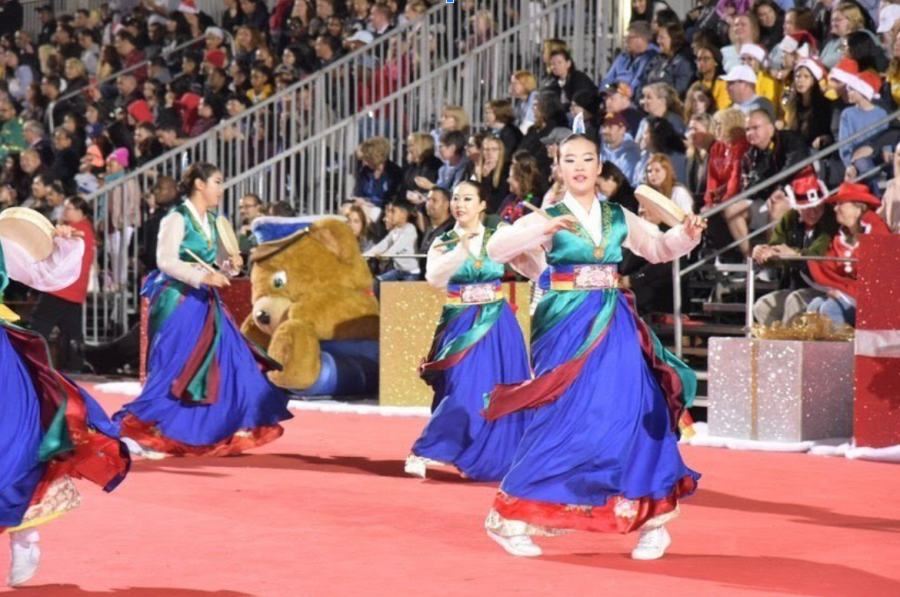Celebrating her cultural roots
Guided by melancholic melodies, sophomore Angelina Kim has found her home on the stages of traditional Korean dance.
Kim was first introduced to the competitive aspect of the art in third grade, a few years after her parents enrolled her in her first dance class.
While she started out feeling forced into the art, Kim soon found her love for Korean dance; feeling like she could express her emotions and relieve stress while doing it. Above all, this dancing style allows her to introduce Korean tradition in places where it may be less prominent.
“The type of dance I do is unique and represents Korean culture and I was attracted to that, especially the look on stages,” Kim said. “Once I started taking it seriously, I came to like how I could spread Korean history and culture through dances even outside of Korea in areas like America where it’s not really common.”
Kim and her dance organization— Korean American Youth Performing Artists— prepare in solos, duos and subgroups rather than a whole group. Alongside three weekly group practices every Thursday, Friday and Saturday, Kim attends one private lesson per week to fine-tune her choreography. The dancer actually starts preparing for upcoming events anywhere from three months to a year in advance in order to perfect her craft and ensure she is stage ready.
“Around one month before the competition, we would get all the clothing, hair and makeup prepared,” Kim said. “And then there’s dress rehearsals a couple weeks before competition.”
Among the numerous awards Kim has received throughout her dancing career, two that mean the most to her include a sub-group win in the Korean instrument category and a third-place individual finish in the traditional dance category, which she earned in early September 2021.
“When I had first heard that I won third place for my individual dance, I questioned if it was a mistake,” Kim said. “ I could not imagine being placed third out of 25 other dancers but at the end of the day, I felt proud and accomplished of my work.”
A couple of Kim’s favorite subcategories of traditional dance are Taegukgi and Taepyeongmu. Taegukgi is an emotional dance based on a Korean historical figure named Yu Gwan-Sun—a young woman who stood up against Japanese Imperialist Forces during the Japanese invasions of Korea. The latter is a bit different. Danced by the nobles in the earliest centuries, it was used to wish great peace upon a country.
“I prefer the sadder and more emotional dances because I can pour more of my emotion into it and express it to the audience,” Kim said. “And honestly, compared to the other dances, it’s a lot harder and more technical because you have to touch the audience’s hearts and make them feel what you are feeling.”
She is currently preparing for another performance later this month, in which she will perform a mix of traditional and fusion dance styles.
Your donation will support the student journalists of Diamond Bar High School. Your contribution will allow us to purchase equipment and cover our annual website hosting costs.









